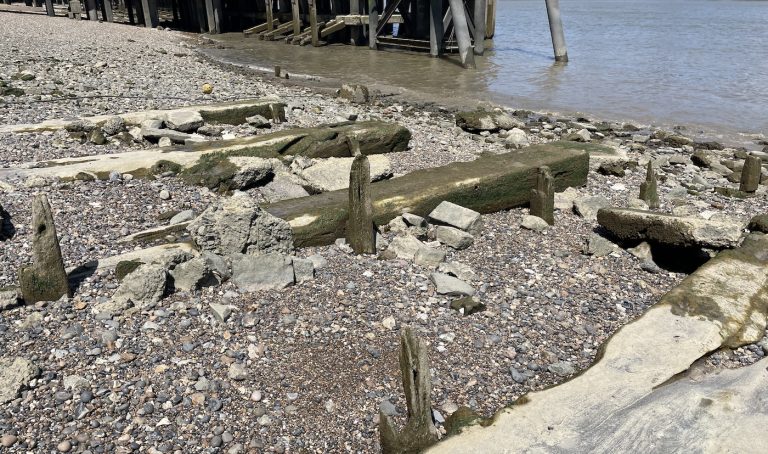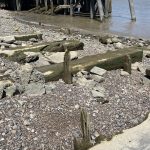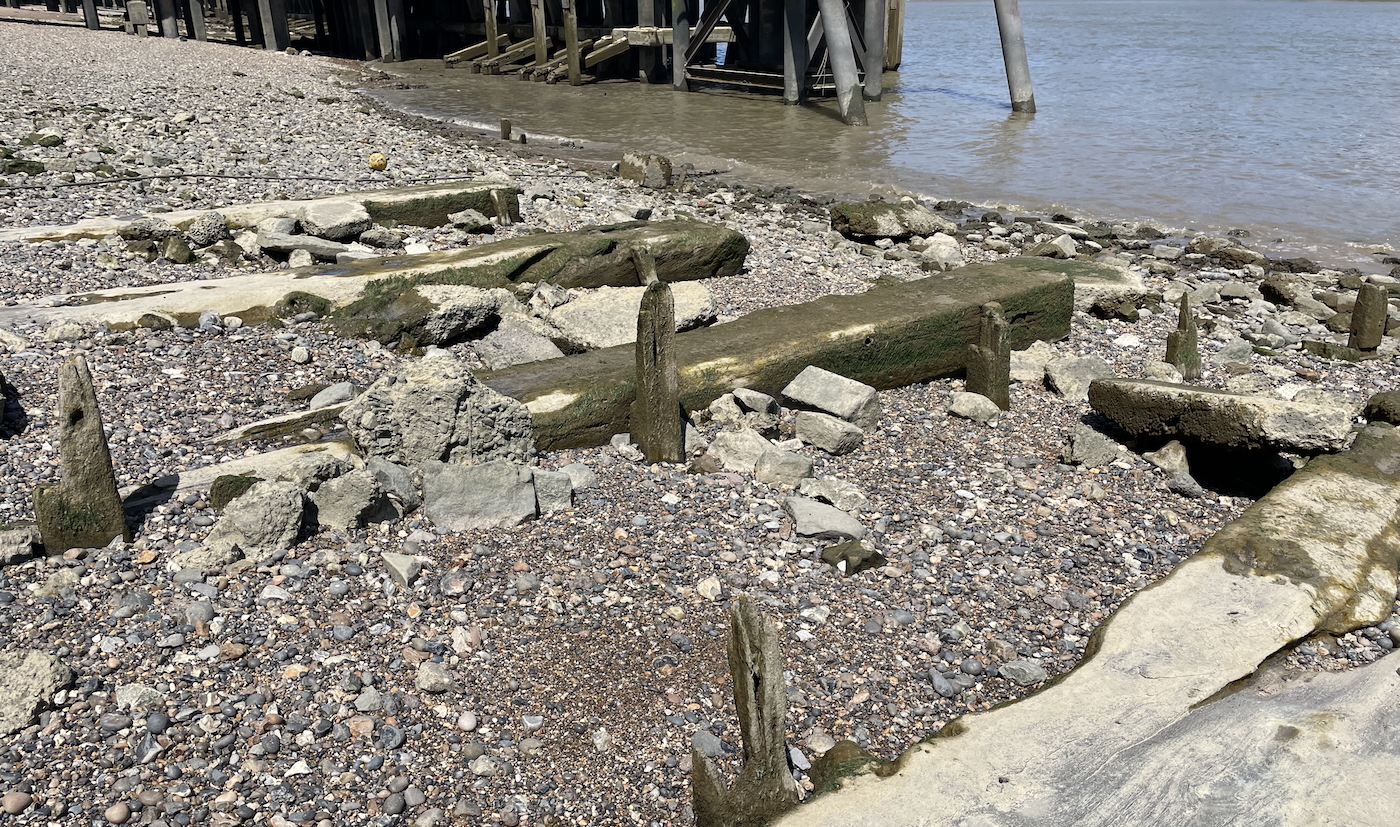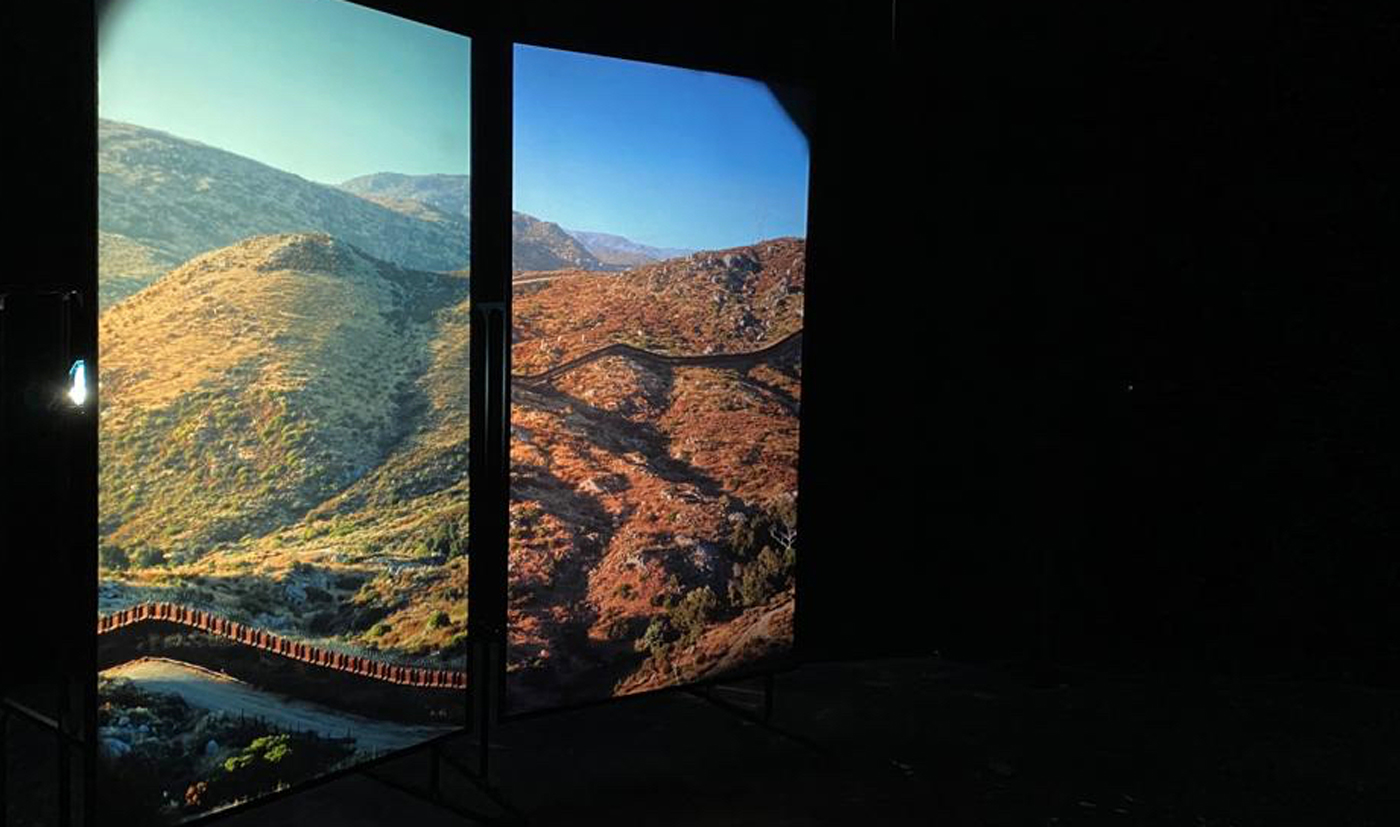Every day, I walk around the vast cityscape of London, the huge buildings, the same streets of familiar houses, crossing the same old bridges, strolling around the same parks, looking down on every mazed passerby on the streets. We construct our world around us to fit our human purposes, in which the designs often rival the natural surroundings. We build and create, knowing that one day what we make will be engulfed by nature once again. I saw this evidently in an aspect of our city that is often neglected, it was variously seen as a trade route, a form of transportation, defence, inspiration for aspiring art and literature, but most evidently a neglected sewer; our River Thames.
Each time the tide comes up and down, new objects and artefacts become rediscovered, which inturn carry fragments of others lives and older cultures; perhaps an oyster half discarded by a victorian worker or a wheel thrown away from someone’s favorite car or maybe even a broken piece of a ceramic bowl from a 17th century hand-painted delftware. These scraps once belonged to someone; they were once invented, produced, constructed for a purpose of sorts, for humanity. However, nothing that we create will ever stay the same concerning nature, in this case, water. You realise that the piece of ceramic you hold has become rounded due to erosion and abrasion, the wheel has become swollen and parts are degrading, and the oyster has been partly dissolved.
Looking at maritime structures around the Thames that were once used for ships look unrecognisable nowadays compared to the beginning of their life. We try to change materials to last longer in outdoor environments. When looking particularly at Dolphin structures (used for mooring ships) from the 19th century, that may no longer be in use, you notice the wood used has rotted, and parts have completely degraded, covered in green algae, completely taken over by nature. So we began using steel, but even that begins to quickly corrode and turn green when exposed to water. Then we use concrete; however, it begins to reduce in strength due to its tendency to absorb moisture.
After centuries of experience with altering materials for different products of specific uses, we accept that nature overpowers everything we have and will ever invent. Therefore, when architects and designers create a new house, building, or vehicle, they calculate how long it is expected to last. A contemporary house in London is generally expected to last between 60 and 100 years. A bicycle lasts about 10 years, 15 if you’re lucky. A commercial building between 50 to 100 years. After their lifespan ends, nature begins to take over. Every raindrop, every amount of pressure that pulls it down, dirt accumulating in small places… We demolish these as we lose interest in them, and then shift our focus onto something new. We rebuild, we reconstruct, and redesign to then demolish and leave behind.
This is certainly untrue. The houses that are meant to last only about 80 years accommodate far longer; they are then refurbished and renovated. As we attach ourselves to what matters to us, what we cherish and love, we imbue an object with the potential of sustained value. This value justifies our continuing commitment to trying to resist the erosion of nature. After spending five days walking by the river, I returned through the same bridges, familiar houses, and towering buildings, finding myself in the heart of my city, but this time I gazed upon them differently, realising that they couldn’t still exist without capturing our imagined perception of value.




